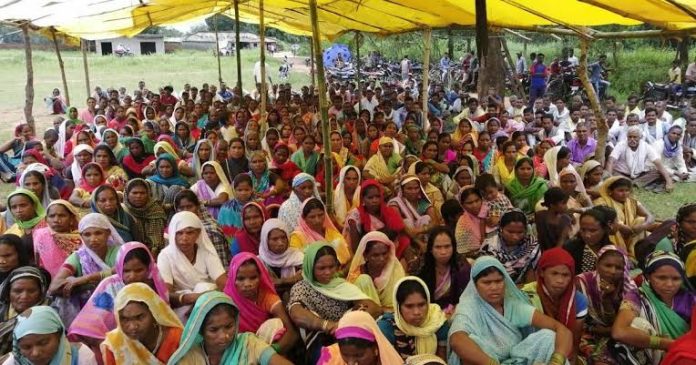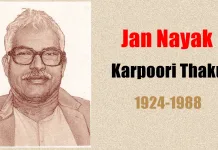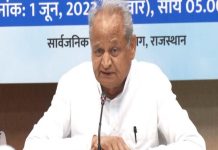Hasdeo Arand Protests: Almost every news article about the Hasdeo protests begins on the same old note. A detailed and somewhat mawkish description of the rich biodiversity of these forests that are the ‘lungs of Chhattisgarh’: teak, sal, and threatened species of butterflies and mammals, all of which in impressive five-digit numbers make up the basic alphabet of disgruntlement. Every word in this argument takes up unequivocally for an elusive and glorified idea of nature.
What is missing from these arguments, sadly, is what is most needed in today’s discourse: nuance. One must bear in mind that India still is a developing country and, without energy, development is an elusive dream. As Gautam Adani said in a recent New York Times interview: “India has to move from developing to developed, and energy is like a food. What my country and its citizens require is affordable, reliable power.”
It might be tempting to compare the progress of India with a country like Germany which plans to abandon coal by 2030, but the comparison does not hold. India has a far larger population that is vulnerable to poverty and its attendant ills. Developing countries embraced industrialization and coal fuelled development earlier in time and played a much larger role in precipitating the very climate crisis that they now want countries like India to fight at the risk of depriving its citizens of all that citizens of developed nations take for granted.
The growth of investment, infrastructure and industry which leads to jobs and economic development needs energy and India is struggling to meet its electricity demands. For example, for something as urgent as the power crisis in Rajasthan, the PEKB coal block is the only reliable antidote.
The resultant damage can and is being offset. More than 8 lakh trees have been planted by the Rajasthan utility to offset the deforestation, to compensate for 1898 hectares of forest land, 42,04,200 trees have been ordered to be planted in 3822 hectares of forest area. A total of Rs 59 crore was deposited in the CAMPA (Compensatory Afforestation Fund Management & Planning Authority) head of the Forest Department for carrying out this task.
Under the PEKB project, 5000 adivasi families have found employment, as well as education and health benefits. According to RRVUNL (Rajasthan Rajya Vidyut Utpadan Nigam Limited) CMD RK Sharma, there will also soon be a 100-bed hospital in Surguja for the locals. Besides, the Parsa East and Parsa mines make for the relatively less dense area of the Hasdeo Forest, occupying only 2.2 % of the total forest area.
Chhattisgarh CM Bhupesh Baghel couldn’t have put it better, perhaps, when he said that those who are fighting (against mining) should first stop using air conditioners, fans and coolers, for their battle to be seen as real.
Quite like the ecosystem of the Hasdeo Forests, the world as it is today, together with civilization and its accoutrements, also forms a complex ecosystem. The protesters must have something to say about the national power crisis, if they choose to raise their voice against mine expansion. They must acknowledge the century we belong to and the trickiness of our advancements, which though harmful in some ways, are indispensable to life today.
This begs the question – are those protesting against mines simply blinkered or are there also vested interests in play? This is a question that needs to be asked, and answered.
Among the leading voices against coal mine expansion in India is a website called Adani watch which is run by an Australian think tank and has been specifically launched to attack the Adani group. Here, one can find the most prominent articles against the PEKB mines. Interestingly, this website came about shortly after the Adani group began building the Carmichael Coal Mine in Queensland, Australia. It is important for one to note, here, that India is a foundation customer for the Carmichael Coal Mine and expects to import coal from it to meet its requirements. On Twitter, there has been and still is an Australian counterpart of the hashtag #SaveHasdeo— a #StopAdani hashtag which began in 2010 after Adani purchased the mine. Why is the hashtag #SaveHasdeo instead of #StopAdani in India? Perhaps because Adani is just the developer and operator of the mines in Chhattisgarh, which in turn is owned by RRVUNL of the Rajasthan government. But another reason might be that, for the sake of appearances, #SaveAdani and #SaveHasdeo must feign to be different and unrelated even if they’re really not. Also, Adani makes for a starker rival in Australia where he has as competitors the BHP and Rio Tinto, which are the world’s first and second largest coal miners respectively.
Simply put, note the chronology of events:
● The Adani group enters Australia, taking over the construction of the Carmichael Coal Mine which will also export coal to meet India’s energy requirements.
● BHP and Rio Tinto are sidelined somewhat– Adani is seen as encroaching on their ‘home turf’. Articles online suggest a cold war in Australia between these giants and the Adani group.
● Soon after, by a strange coincidence, protests began on Adani’s home turf: India.
● These protests found and continue to find their strongest plank of online support from a website run out of Australia, by an Australian think tank.
Any protest must have its share of ideological infiltrators and certain undertones of rivalry and politics, to give it a sense of noise. But there is often a camouflaged subsection of individuals with motivations that are hard to see through. The Australian Bob Brown Foundation is one such group. Founded by former Australian Senator Bob Brown, this is the organisation behind Adani Watch. Eversince the Carmichael Coal Mine project, it has been a stalwart critic of the Adani Enterprise.
So are local or international interests behind the protests in Hasdeo Arand?
If international, then are these interests motivated by profit and corporate competition?
What support is provided by these interests? Online? Media? Social Media? Financial?
The most important question: At a time when India is straining to grow and dominate the world, who stands to gain the most by dealing not just enterprises like the Adani group, but also the growth and development of India and its people a deathblo?






















